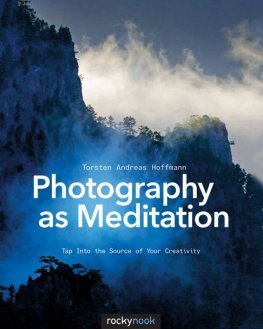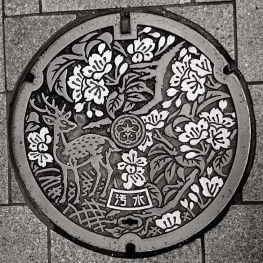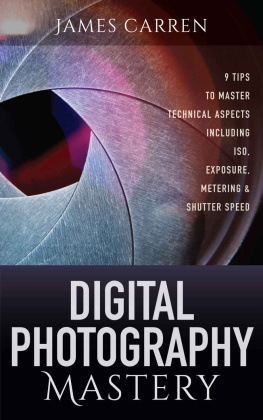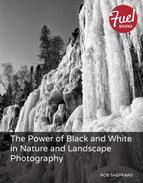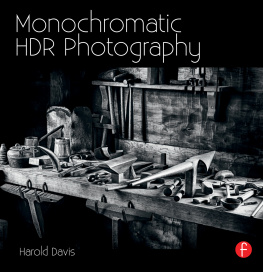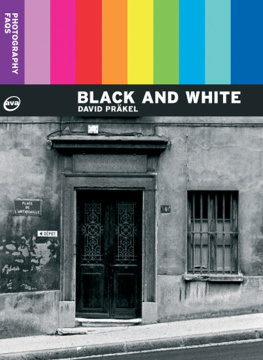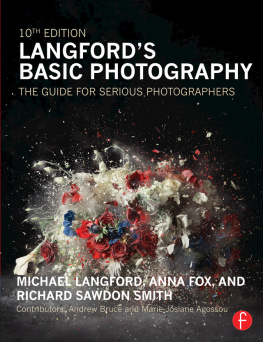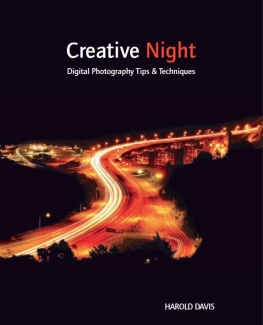The Art of Black and White Photography
2nd Edition
The Art of Black and White Photography
Techniques for Creating Superb Images in a Digital Workflow
2nd Edition
Torsten Andreas Hoffmann
rockynook
Torsten Andreas Hoffman,
Editor: Gerhard Rossbach
Copyeditor: Judy Flynn
Layout: Petra Strauch
Cover Design: Helmut Kraus, www.exclam.de
Cover Photo: Torsten Andreas Hoffman
Printer: Everbest, China
Printed in China
ISBN 978-1-933952-96-3
2nd Edition
2011 by Rocky Nook Inc.
802 East Cota St., 3rd Floor
Santa Barbara, CA 93103
www.rockynook.com
Library of Congress Cataloging-in-Publication Data
Hoffmann, Torsten Andreas, 1956
[Kunst der Schwarzweissfotografie. English]
The art of black and white photography : techniques for creating superb images in a digital
workflow / Torsten Andreas Hoffmann. -- 2nd ed.
p. cm.
ISBN 978-1-933952-96-3 (pbk.)
1. Photography--Digital techniques. 2. Black-and-white photography. I.Title.
TR267.H645513 2011
777--dc23
2011027268
Distributed by OReilly Media
1005 Gravenstein Highway North
Sebastopol, CA 95472
All product names and services identified throughout this book are trademarks or registered trademarks of their respective companies. They are used throughout this book in editorial fashion only and for the benefit of such companies. No such uses, or the use of any trade name, is intended to convey endorsement or other affiliation with the book.
No part of the material protected by this copyright notice may be reproduced or utilized in any form, electronic or mechanical, including photocopying, recording, or by any information storage and retrieval system, without written permission of the copyright owner.
This book is printed on acid-free paper.
Introduction
Digital photography has conquered the market at breakneck speed despite the fact that in the early years of the technology, professional photographers eyed its development with skepticism. As photographers migrated from analog to digital, they suffered through more than their share of growing pains, struggling with the new technology and doubting its viability. The following questions were among those being asked:
Is it actually possible to make large, quality prints from digital images?
Dont digital photos look artificial?
Do the colors look natural?
How does digitalization affect black and white photography?
In order to answer these questions and to get acquainted with digital photography, one thing was certain: it was necessary for photographers to devote time to learn about the technology. Not only was it essential for photographers to become familiar with a new, and rather complex camera technology, it was also necessary to thoroughly understand the new image manipulation programs. Many photographers initially shied away from these efforts, and as a result, traditional analog photography had to be defended by those who had not even acquired an in-depth knowledge of the digital process.
The Image in the Digital Age
Many textbooks have been written about digital cameras, digital technology, and the latest image manipulation programs, which are meant to facilitate both amateurs and professionals as they transition from analog to digital. However, one aspect seems to have been almost forgotten in the process: Digital photography goes beyond the technical and is also about images and their contentabout moods and their formal arrangements. This book will help you become familiar with digital photography and focus again on the image in the digital age.
Images have their own special language and primordial laws. Black and white photography is a medium that begs to be artistically shaped in both digital and analog photography. Certainly, digital photography technology appears complicated and must be mastered, but the technology of photography should not always be the main subject; rather, the technology should only serve to guide you toward the end result of expressive, artistic images.
Apart from the technical aspects of production, whether a picture was taken in analog or digital format is completely irrelevant to the presentation of the image. Therefore, to help you learn about image composition, several of the examples included in this book were produced through analog photography. While this book forgoes specifying the processes used to create analog images, it does provide information on the technical procedures used to create each digital photograph.
Needless to say, although this book deals with digital technology and provides you with essential technical information explained in simple terms, it is primarily an advanced guide to image composition. Thus, the first and longest part of this book deals mostly with content-related subjects such as landscape, architectural, portrait, and street photography. For each of these subjects, well-known examples from historical and current photography are mentioned with the aim of motivating you to go beyond this book and delve further into these subjects.
The second, larger part of this book deals extensively with the classic rules of image composition such as the golden ratio, triangular composition, image tension, and so on. This part of the book teaches the essentials of image analysis; however, you should not view the rules of composition as recipes to be strictly followed. On the contrary, after you have absorbed these compositional rules, you will be reminded not to adhere to them at all times; rather, you should feel free to discard them when it suits your purpose, and, in the best-case scenario, apply them to develop your own pictorial language.
Technical Information in this Book
Analog black and white technique is taken for granted and is not explained in this book, but with every digital image included, the technical procedure is briefly explained. Some chapters in this book are devoted to important technical information:
The quality and features of digital cameras
The processes of shooting in RAW mode
Photoshop techniques that you really need for manipulating the perfect digital black and white photo, explained in a simple way
Emphasize Expression
Throughout this book you will be repeatedly reminded that photography is about learning to see, to compose an image, and to think pictorially. In a nutshell, this book will stimulate you to analyze images in-depth and will motivate you to find your own photographic style. To accomplish this, my photographs are used as examples to communicate the diversity of pictorial language. The knowledge you gain from the information this book provides can be transferred to other totally unrelated subjects.
One thing is certain, however: With digital photography, although the increasingly difficult techniques must be mastered, technology should never become an end in itself. It is precisely because of this that it is so important to stress that photography is not preeminently about technique but rather images with content that expresses the photographers consciousness while being created in an interesting way. And that is what this book is about.
Section 1 Tools and Fundamentals
1 Choosing a Good Digital Camera
In analog photography, the camera does not have the essential importance often attributed to it. It is the quality of the lens that is paramount, because the optical system and the type of film used are mostly responsible for a technically satisfactory image quality. These things are completely different in digital photography, where it is the quality of the camera sensor that determines image quality as much as the optical system. Therefore, most of the timeand in contrast to analog photographythe latest camera sensor model is in fact often the best one as well. Digital photography has evolved so much in recent years that high-quality images have become a reality; something that even a few years ago was by no means the case.


